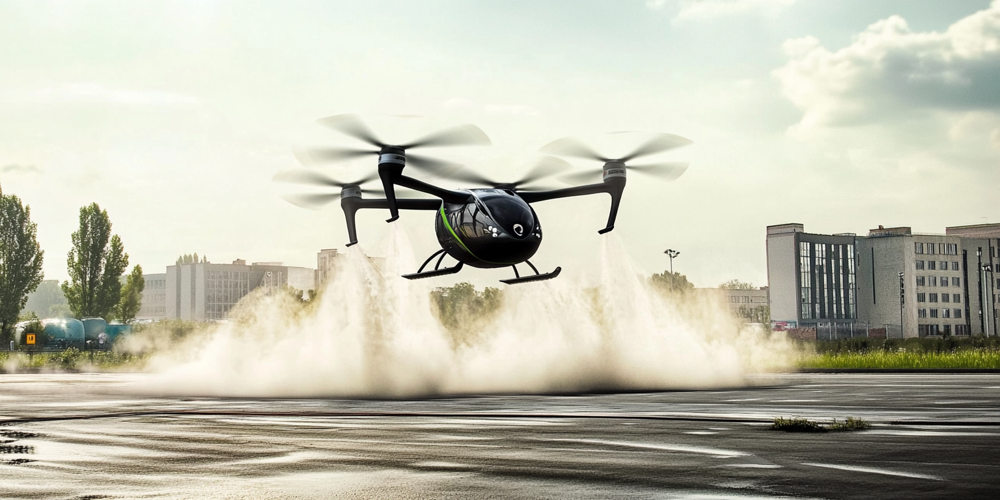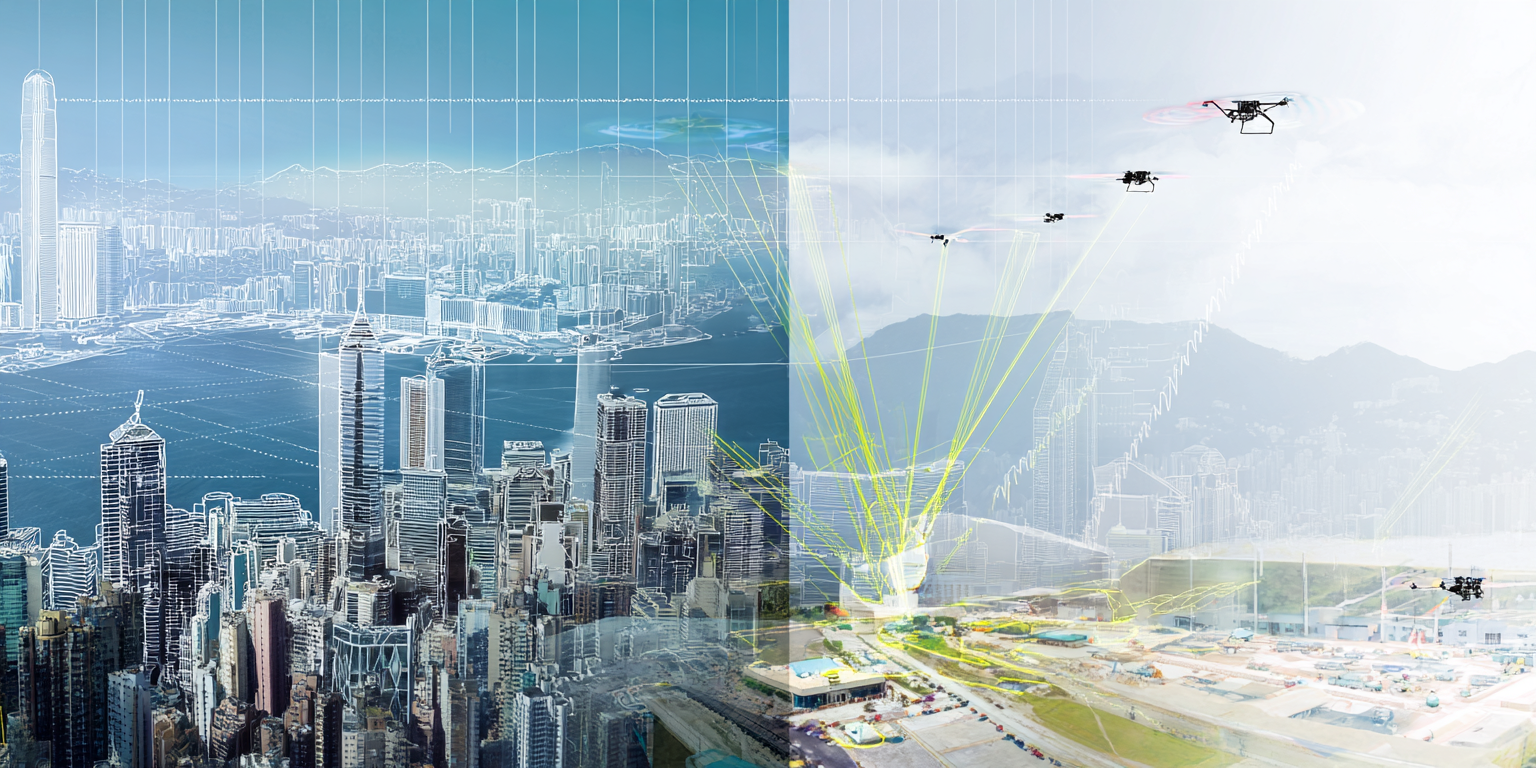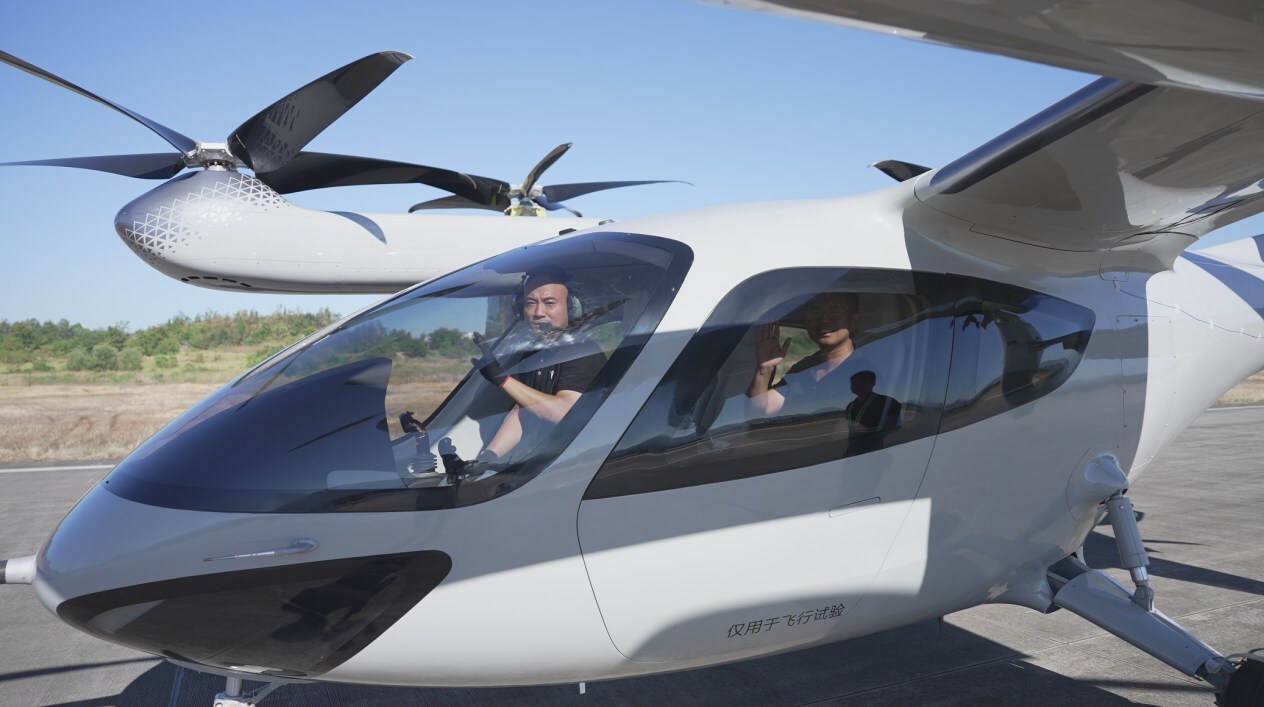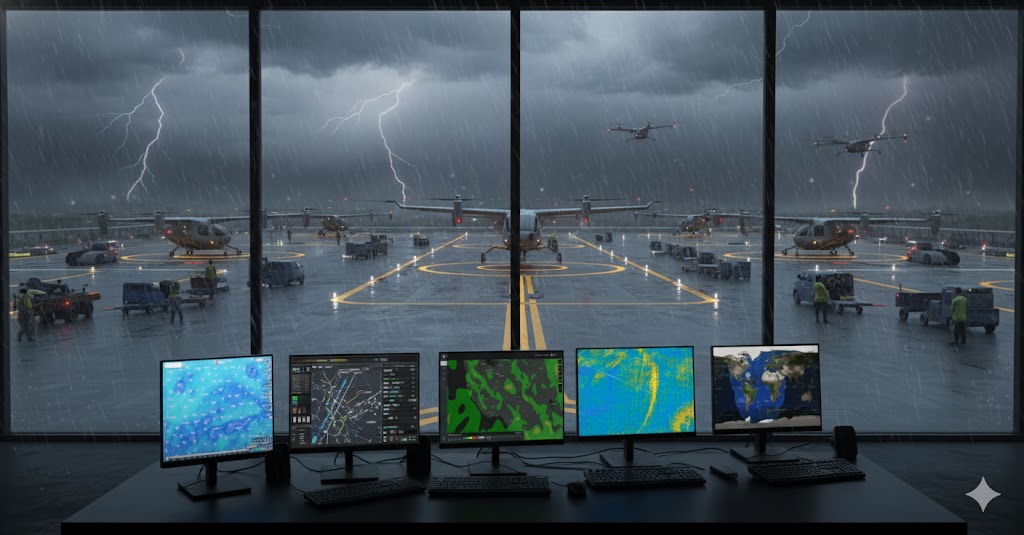You’re standing on a rooftop vertipad in downtown Manhattan, watching as an electric air taxi prepares to land. What should be a routine urban transportation moment suddenly turns dangerous as hurricane-force winds, invisible and unpredictable, blast outward from the aircraft at nearly 100 miles per hour. This is the brutal reality of downwash and outwash, the most underestimated challenge facing the low-altitude economy today.
The Federal Aviation Administration didn’t mince words in its December 2024 report. Electric vertical takeoff and landing aircraft create downwash effects “equivalent to hurricane-force winds” that can extend far beyond traditional safety zones. Unlike the predictable rotor wash from conventional helicopters, these multi-rotor eVTOLs generate complex, turbulent airflow patterns that defy conventional understanding.
The FAA’s Engineering Brief 105A, updated in December 2024, provided a clear definition of the regulatory landscape. Any space where outwash wind velocity meets or exceeds 34.5 mph must be designated as a Downwash/Outwash Caution Area. Real-world testing shows that outwash spreads farther and with greater intensity than current safety-area requirements anticipate.
The brief acknowledges that these caution areas “may require supervision of vehicular and pedestrian traffic during VTOL movement, provisions of robust maintenance and FOD prevention processes, and safeguarding of the DCA from future development to reduce the likelihood of injury or third-party damage”. Translation: Without mitigation technology, urban vertiports require massive safety buffers, making them economically impractical.
Robert Bassey from the FAA’s Office of Airport Engineering has been clear that their initial technical report on eVTOL downwash represents just the beginning. The agency plans to engage with manufacturers over the coming months to collect additional data and build “a more robust framework around design infrastructure”.
The FAA’s own testing revealed sobering numbers. One unidentified eVTOL’s outwash was clocked at more than 60 mph at 100 feet from the center of the aircraft’s touchdown area. The maximum instantaneous downwash velocity recorded was almost 100 mph at just 41 feet from the center. These are hurricane-force winds that “easily go beyond the safety area of a vertiport”.
Dr. Richard Brown from Sophrodyne Aerospace, who has been working with both the FAA and UK Civil Aviation Authority on downwash modeling, states: “The outwards flow is often conceptualized as a steady outwards flow of air that reduces in intensity the further one stands from the aircraft, but experience shows the reality to be completely different”. His research reveals that eVTOL downwash behaves more like violent, pulsing bursts of air rather than steady wind streams.
The 79% Solution: Peniel’s Underground Approach
Enter Peniel Infrastructure, a company attacking this problem with the methodical precision of an engineer who understands that urban real estate costs more than gold. Their solution? Drive the problem underground.
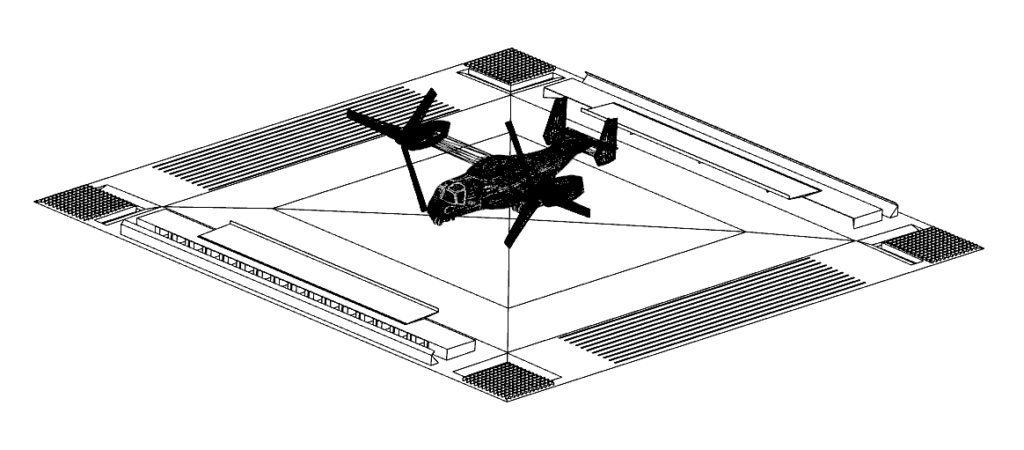 Peniel Deflector
Peniel Deflector
Peniel offers two distinct approaches to outwash mitigation. The first, their “Peniel Deflector,” stands less than 80 centimeters high and positions itself strategically along an aircraft’s longitudinal axis. Think of it as a blast deflector reimagined for the eVTOL era - compact, innovative, and designed to contain hazardous outwash while keeping lateral access clear for aircraft and ground personnel.
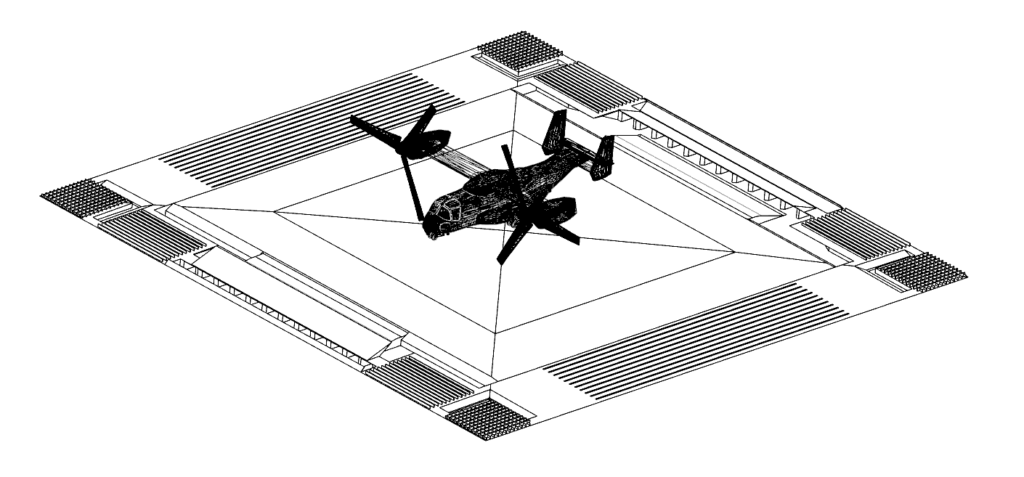 Peniel Underground Downwash Mitigation System
Peniel Underground Downwash Mitigation System
But their underground system represents something more innovative. The “Peniel Underground” places the majority of outwash mitigation infrastructure below ground level, eliminating visual obstructions that could distract pilots during critical landing phases. It’s protected under U.S. Provisional Patent No. 63/829,111 and represents a fundamental rethinking of how we approach the downwash problem.
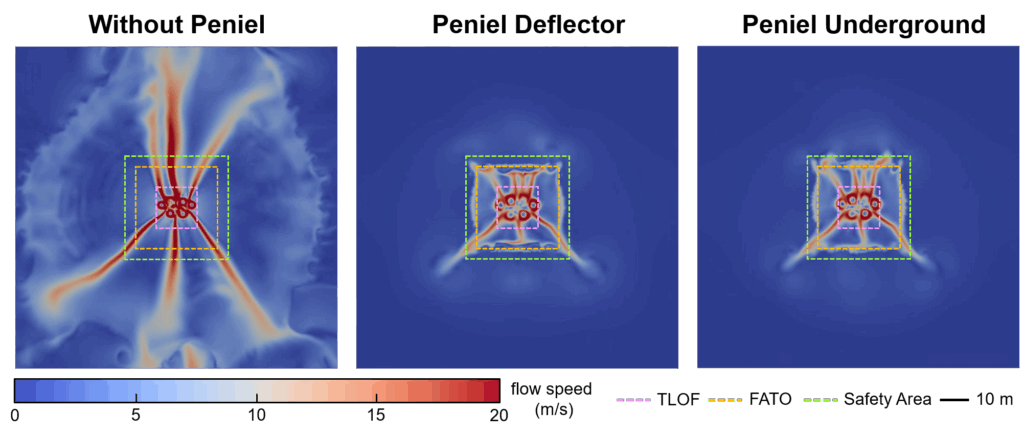
Peniel’s computational fluid dynamics analysis shows their systems can reduce vertiport land requirements by up to 79% compared to layouts dictated solely by conventional buffer zones. When you’re talking about urban real estate where a single square foot can cost thousands of dollars, those numbers become profound economic arguments.
Skyportz and the Art of Energy Dissipation
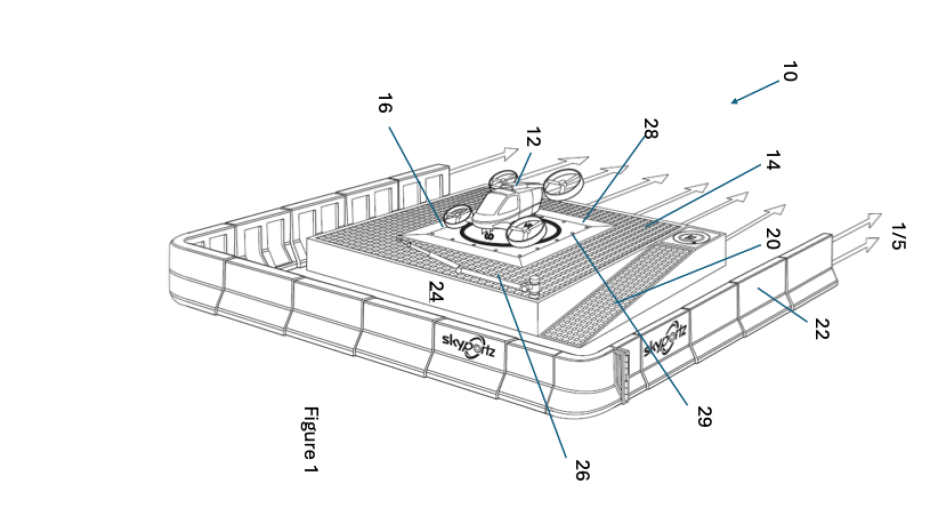
Half a world away in Australia, Skyportz has taken a different approach. Their modular vertipad patent, unveiled at the Avalon International Airshow, claims to dissipate energy up to 250% faster than traditional flat tarmac surfaces.
CEO Clem Newton-Brown, whose background in town planning rather than aviation gives him a unique perspective on infrastructure realities, explains their approach: “The Skyportz vertipad patent has some very real applications as cities move to establishing vertiport networks outside of existing airports and helipads. It means that with our vertipad, you can safely use less land or fit more pads onto a smaller plot”.
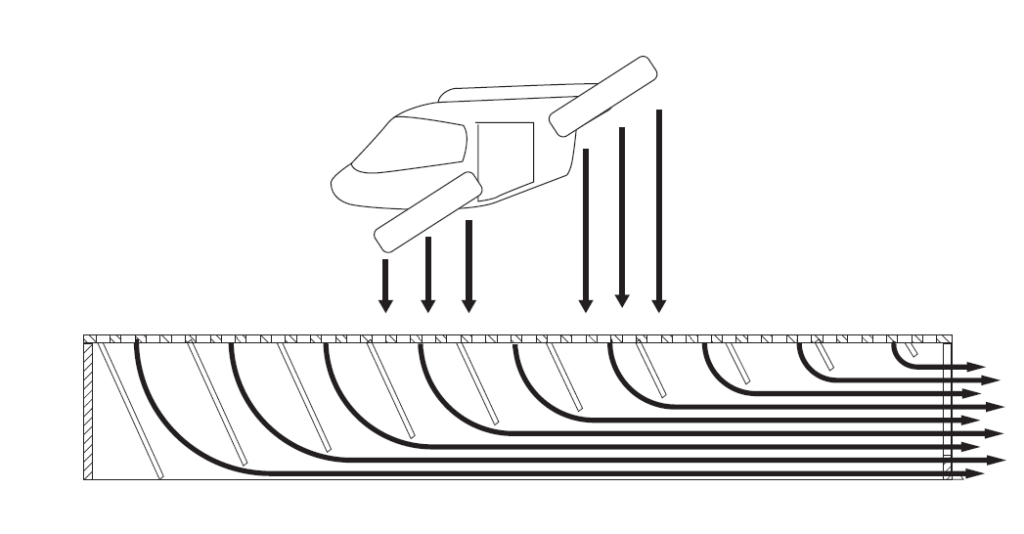
The Skyportz design employs surface treatments that disrupt laminar airflow patterns, converting kinetic energy into dissipating vortices. Mechanical systems beneath the surface create what is known as a “Magnus effect,” which redirects outwash away from passenger areas while accelerating energy dissipation. It’s modular, utilizing hexagonal units that enable customizable configurations suitable for various urban spaces while maintaining safety standards.
Professor Justin Leontini from Swinburne University of Technology, who has been conducting computational fluid dynamics modeling for Skyportz, describes their approach as capable of dissipating power “up to two and a half times faster than if an air taxi were to use a flat concrete landing surface.”
Urban-Air Port’s Vertical Airfield
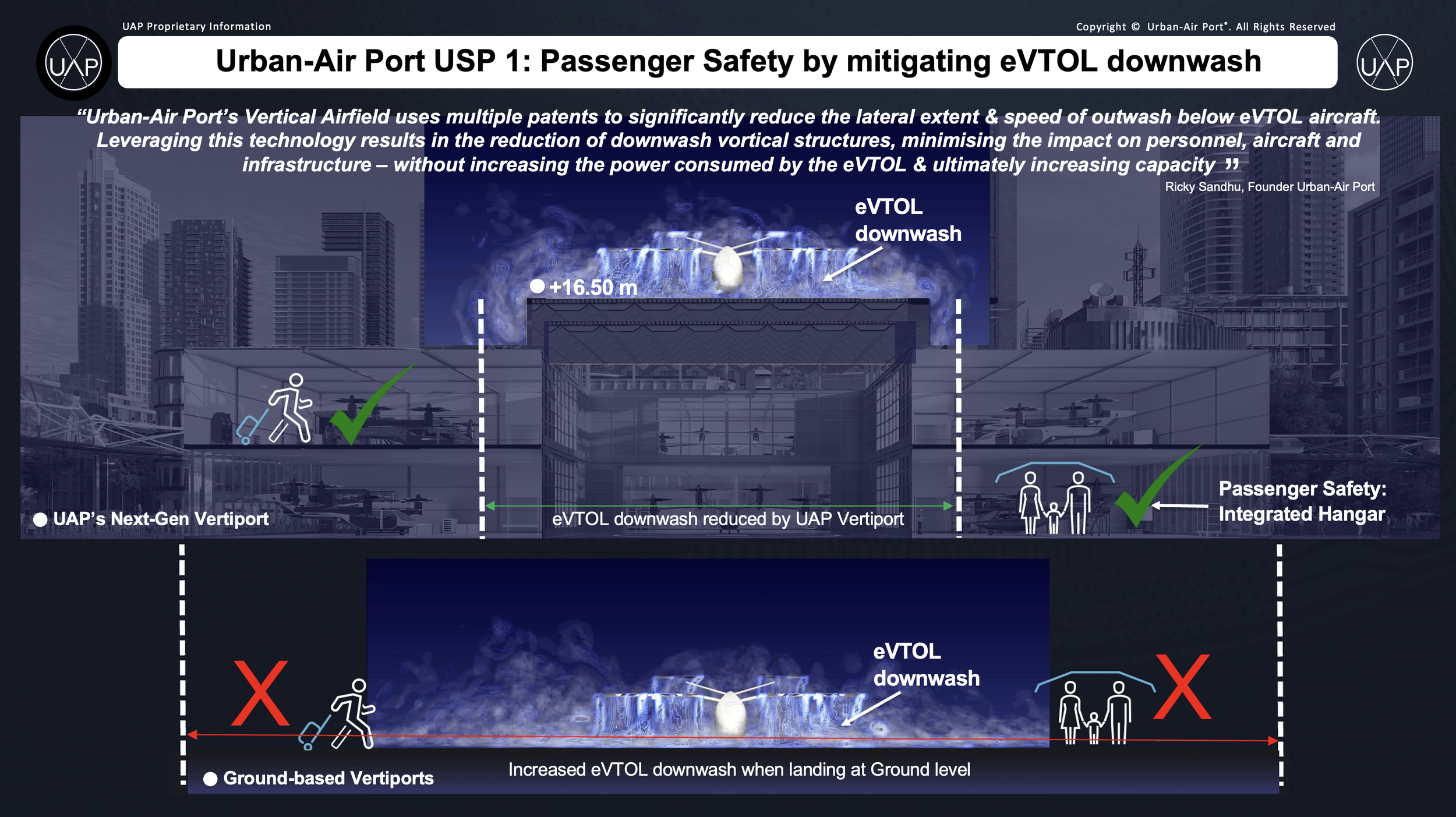
British company Urban-Air Port approaches the problem from yet another angle with their “Vertical Airfield” technology. Their elevated landing platform utilizes a “multi-patented design” to disrupt the formation of hazardous airflow patterns.
Unlike traditional flat vertiport layouts, Urban-Air Port’s solution works by disrupting vortical flow structures at their source. Their system significantly reduces both the lateral extent of outwash below the aircraft and the speed of outward flow across the ground. Because outwash gets suppressed at its source, their approach maintains safe operating conditions without requiring additional power from the aircraft during hover.
The company’s approach focuses on preventing the formation of strong vortical cells that make the eVTOL rotor wake so dangerous to ground personnel and nearby infrastructure. Their elevated platform design essentially breaks up these flow patterns before they can propagate across hundreds of feet beyond the landing pad.
The Science Behind the Solutions
Dr. Richard Brown’s research through Sophrodyne Aerospace has been instrumental in advancing industry understanding of these complex aerodynamic phenomena. His work shows that the shape and strength of outwash generated by multi-rotor eVTOL aircraft depend heavily on rotor layout and other design factors.
“Several aspects of the behaviour of the outwash that is created by eVTOL aircraft may come as a surprise to the rotorcraft community, where intuition is largely based on experience with conventional helicopters,” Brown notes. His computational modeling, utilizing the Vorticity Transport Model, provides detailed insights into flow structures that traditional CFD approaches struggle to capture.
The Research Assessment of Transitory Helicopter Downwash project, conducted in partnership with the UK Civil Aviation Authority, has revealed that downwash and outwash behave as highly turbulent and transient phenomena rather than the steady wind-like forces they were previously thought to be. This turbulence affects people both physically and psychologically, making accurate modeling essential for developing safer operational procedures.
Brown’s research has shown that multi-rotor eVTOLs create particularly complex wake interactions. The multiple rotors don’t just generate their own individual downwash patterns - they interact with each other in ways that can amplify and modify the overall flow field. When this complex wake structure hits the ground and turns into outwash, the resulting patterns can be far more unpredictable and dangerous than those from conventional single-rotor helicopters.
Looking Forward: The Economics of Safety
The economic implications of downwash mitigation extend far beyond the technology itself. Newton-Brown from Skyportz frames it in terms that urban planners understand: “One of the big things we want to do is to get the property industry to pay for these vertiports. We’re not just addressing the existing airport/heliport conversions that everyone’s been talking about, but the property market, which is almost infinite”.
This represents a shift in how we think about aviation infrastructure. Instead of limiting vertiports to traditional aviation facilities, effective downwash mitigation could enable placement on commercial buildings, residential developments, and private properties. Properties with vertipads could command higher rents as businesses seek to provide air taxi services for customers.
The technology also addresses fire safety concerns, particularly relevant given the lithium-ion battery systems powering most eVTOL aircraft. Skyportz’s design includes the ability to create a containment system that can fully immerse a burning plane in water, potentially preventing lengthy airport shutdowns that could otherwise last days.
For manufacturers like Joby, which recorded a maximum instantaneous outwash velocity of 55 mph at around 70 feet from the landing center, the debate over measurement methodologies remains contentious. Joby argues that using mean outwash values over 15 seconds provides a more realistic assessment than peak instantaneous readings; however, critics suggest that this approach may underestimate the real hazards posed by intermittent high-velocity air pulses.
The Path Ahead
With major eVTOL manufacturers like Joby and Archer approaching certification, the need for practical infrastructure solutions has never been more urgent. The FAA’s commitment to data-driven approaches means that companies with proven, scientifically validated solutions will likely have a significant advantage.
The race to solve downwash mitigation has attracted participants from around the world. Each approaches the problem with different philosophies and technical solutions.
Peniel Infrastructure focuses on modularity and rapid deployment, with systems that can be assembled on-site in under a day, compared to the multiple days required for conventional solutions. Their approach emphasizes compatibility with diverse site conditions and adaptability to various eVTOL platforms.
Skyportz has taken a more research-intensive approach, partnering with Swinburne University and Sophrodyne Aerospace to develop scientifically validated solutions. They’ve also opened a retail capital raise to fund further research and development, indicating a serious long-term commitment to the technology. Their latest patent applications include dynamic height settings for landing surfaces and adjustable blast screens, allowing airports to tailor configurations to specific aircraft types.
Urban-Air Port’s approach emphasizes operational efficiency through its elevated platform design, claiming to maintain throughput while reducing real estate requirements. Their focus on preventing vortical flow formation represents a proactive rather than reactive approach to the problem. The company’s Vertical Airfield can automatically raise itself to 15 meters above ground level for takeoffs and landings, creating a totally insulated passenger area below.
Each solution addresses the same fundamental challenge: making urban air mobility economically viable by solving the downwash problem that could otherwise require prohibitively large safety buffers around vertiports. The companies that succeed will be those that can demonstrate not only technical effectiveness but also economic practicality and regulatory compliance.
As the UK Civil Aviation Authority’s research has shown, the cognitive impact of turbulent downwash extends beyond physical safety. Future trials using the Bedford rating scale could quantify the effects of downwash and outwash on cognitive function, helping to develop safety protocols for eVTOL pilots and ground crews operating in turbulent conditions.
The integration of artificial intelligence tools shows promise for automated verification of eVTOL airflow models. AI might eventually be integrated onboard aircraft to detect hazardous conditions in real-time, allowing pilots to adjust flight paths accordingly. But these advanced systems will only be as good as the fundamental mitigation technologies that form the foundation of safe vertiport operations.
The low-altitude economy depends on solving this invisible threat. These early solutions represent the first serious attempts to tame the hurricane-force winds generated by eVTOL aircraft. As the industry moves toward commercial operations, companies developing these mitigation technologies may determine which cities can actually support urban air mobility and which will remain grounded by the physics of turbulent air.
